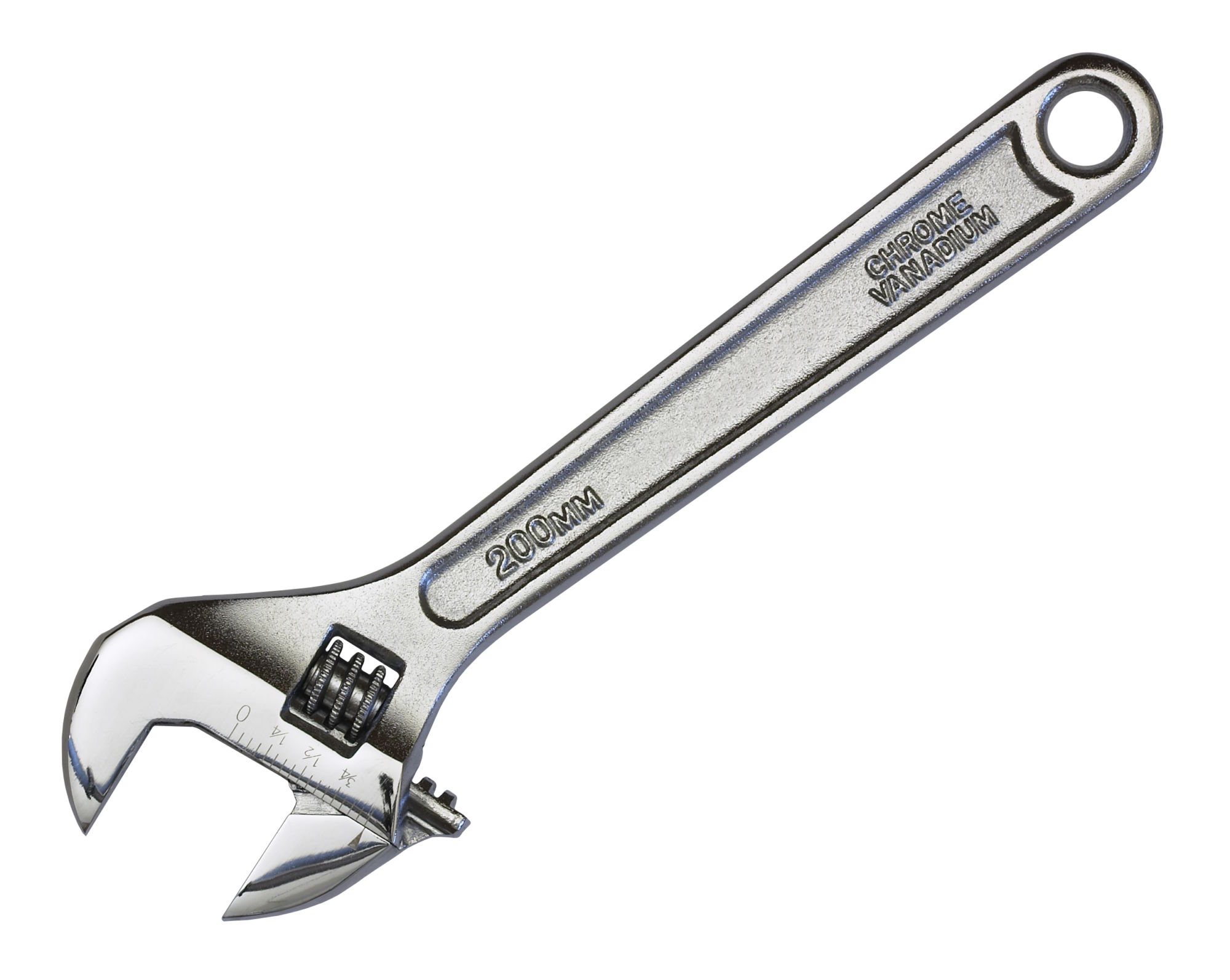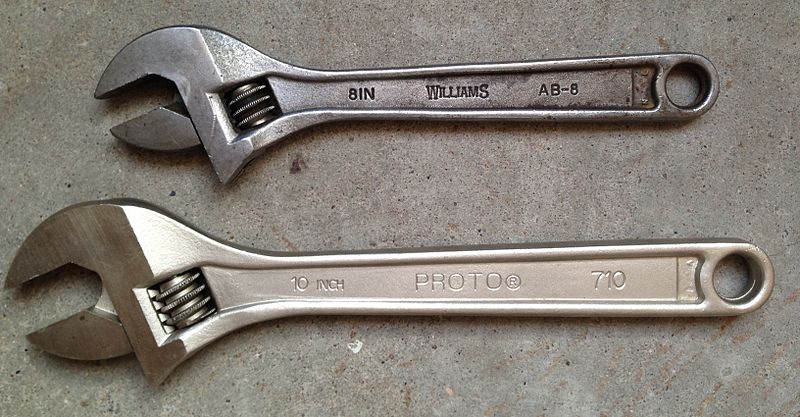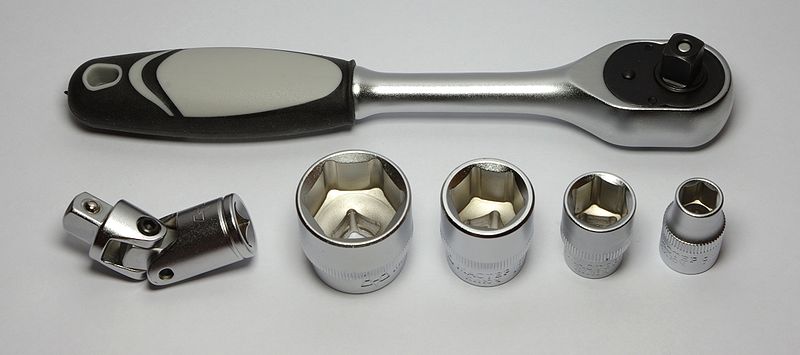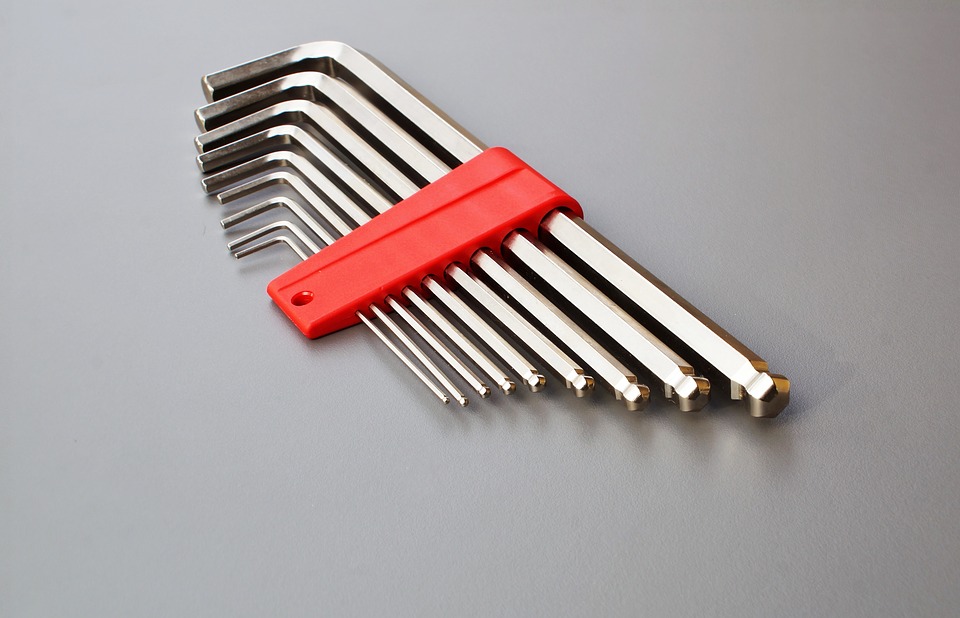A typical job of a wrench is to tighten or loosen nuts and bolts to secure a joint. The wrench’s head fits over the nut and provides leverage for tightening or loosening it.
Photo Courtesy: Wikimedia Commons
You’re probably thinking of a crescent wrench when you think of a classic home repair wrench. It’s a curved one-sided wrench with an aperture to move around the nut. The longer the handle, the more leverage you’ll have, and the tighter the wrench head is on the nut, the better the grip you’ll have—which is very important for loosening stubborn nuts.
What are the Different Types of Wrenches?
Wrench comes in a variety of forms and sizes and is used to grip, fasten, turn, tighten, and loosen items such as pipes, pipe fittings, nuts, and bolts. Wrenches are divided into two categories:
Pipe wrenches are used in the plumbing industry to hold cylindrical(round) objects. There are two types:
- Wrenches for general usage on nuts and bolts with flat, parallel surfaces, such as square or hexagonal nuts and bolts (hex).
- Wrenches can be adjusted to accommodate various sizes of pipes, nuts, and bolts, or they can be fixed in size.
Adjustable wrenches come in a variety of shapes and sizes. Wenches that can be adjusted include:
- Wrenches for removing pipes.
- Crescent (TM wrenches. Adjustable jaws are positioned at a 30-degree angle from the handle on Crescent wrenches. Even though Crescent is a brand name, it is commonly used to describe any ordinary adjustable wrench with an angled jaw, regardless of who made it.
- Monkey wrenches with a 90-degree angle between the adjustable head and the handle.
Photo Courtesy: Wikimedia Commons
Examples of Wrenches
The following are examples of wrenches:
Socket wrench
When you have a lot of fixing to do, it’s time to put the crescent or open-end wrench away and grab for the Socket wrench, which is more efficient. A socket wrench is a hand tool with a ratcheting mechanism on the head and a square nub that attaches to various size sockets. Socket sets are available in a variety of sizes to fit any type of fastener (metric and SAE). If you’re just getting started with tools, invest in a socket wrench with a 3/8-inch square drive mechanism and a socket set that consists largely of six-point hex sockets — the twelve-point type can harm nuts and bolts if you apply too much torque.
Photo Courtesy: Wikimedia Commons
Torque wrench
A Torque wrench is a tool for tightening nuts and bolts to a certain torque value. This tool allows fasteners to be tightened at the correct tension, preventing damage from overtightening or joints from breaking apart due to under-tightening. This means that the proper torque measurement is critical for equipment safety, assembly, and performance.
Nut driver wrench
Another sort of socket wrench is a nut driver, which is a socket that can be snapped on or permanently attached to a screwdriver-like handle.
Allen wrench
If you’ve bought furniture from stores, you’ve probably amassed quite a collection of Allen wrenches. They’re the teeny little hockey stick-shaped pieces that come with your bookcase’s hardware. An Allen wrench is utilized on screws and bolts having a hexagonal socket in the head. Allen wrenches are available in a variety of sizes to suit any project you may find. Allen’s wrench set has proven to be more useful than everyone anticipates. They can be used in lots of projects.
Photo Courtesy: Pixabay
Fixed wrench
Fixed wrenches are made to fit only one size. Metric wrench sizes are represented as whole numbers that match millimeter sizes (e.g., 8, 10, 14, 32). S.A.E (Society of Automotive Engineers) sizes are non-metric sizes that are often used in the United States and are stated as fractions of an inch, such as 1/4, 1/2, 3/4, and 1 1/4. Because both metric and S.A.E. fasteners (nuts, bolts, etc.) are used in Canada, users must choose the correct type and size of wrench to avoid injury and equipment damage in the event of wrench slippage.
What are the Dangers of Wrenching?
Hazards can vary, depending on the job. The wrench comes loose from the job. You may lose your equilibrium if the workpiece suddenly breaks free. The wrench or workpiece may break. Stress and strains on the hand and arm can be caused by turning the handle quickly or with force.
What Are Some General Wrench Safety Precautions?
Use the appropriate tool for the job, such as pipe wrenches for pipes and plumbing fittings, and general-purpose wrenches for nuts and bolts. Any damaged wrenches should be discarded (e.g., open-ended wrenches with spread jaws or boxes wrenched with broken or damaged points). To avoid slipping, choose the right jaw size. Where there is a risk of flying particles or falling debris, wear safety glasses or goggles with a face cover (with safety glasses or goggles).
Position your body in such a way that you won’t lose your balance and injure yourself if the wrench slips or something (such as a bolt) snaps. When possible, use a box or socket wrench with a straight handle rather than an offset handle. Before exerting pressure, be sure the jaw of an open-ended wrench is in complete contact (fully seated, “flat,” not slanted) with the nut or bolt.
The direction of the turn with an adjustable wrench should be against (towards) the permanent jaw. To avoid unexpected slippage and possible injuries, make sure the teeth of a pipe wrench are sharp and clear of oil and debris, as well as the pipe or fitting.
CITATION:
Brett. “Toolmanship: Your Complete Guide to Wrenches.” The Art of Manliness, 6 Mar. 2013, www.artofmanliness.com/lifestyle/gear/toolmanship-your-complete-guide-to-wrenche. Accessed 28 Sept. 2021.
Government of Canada, Canadian Centre for Occupational Health and Safety. “(None).” Ccohs.ca, 2017, www.ccohs.ca/oshanswers/safety_haz/hand_tools/wrenches.html.
“Wrenches 101: Uses and Types of Wrenches (with Pictures).” MT Copeland, 23 Dec. 2020, mtcopeland.com/blog/wrenches-101-uses-and-types-of-wrenches/. Accessed 28 Sept. 2021.
![]()














